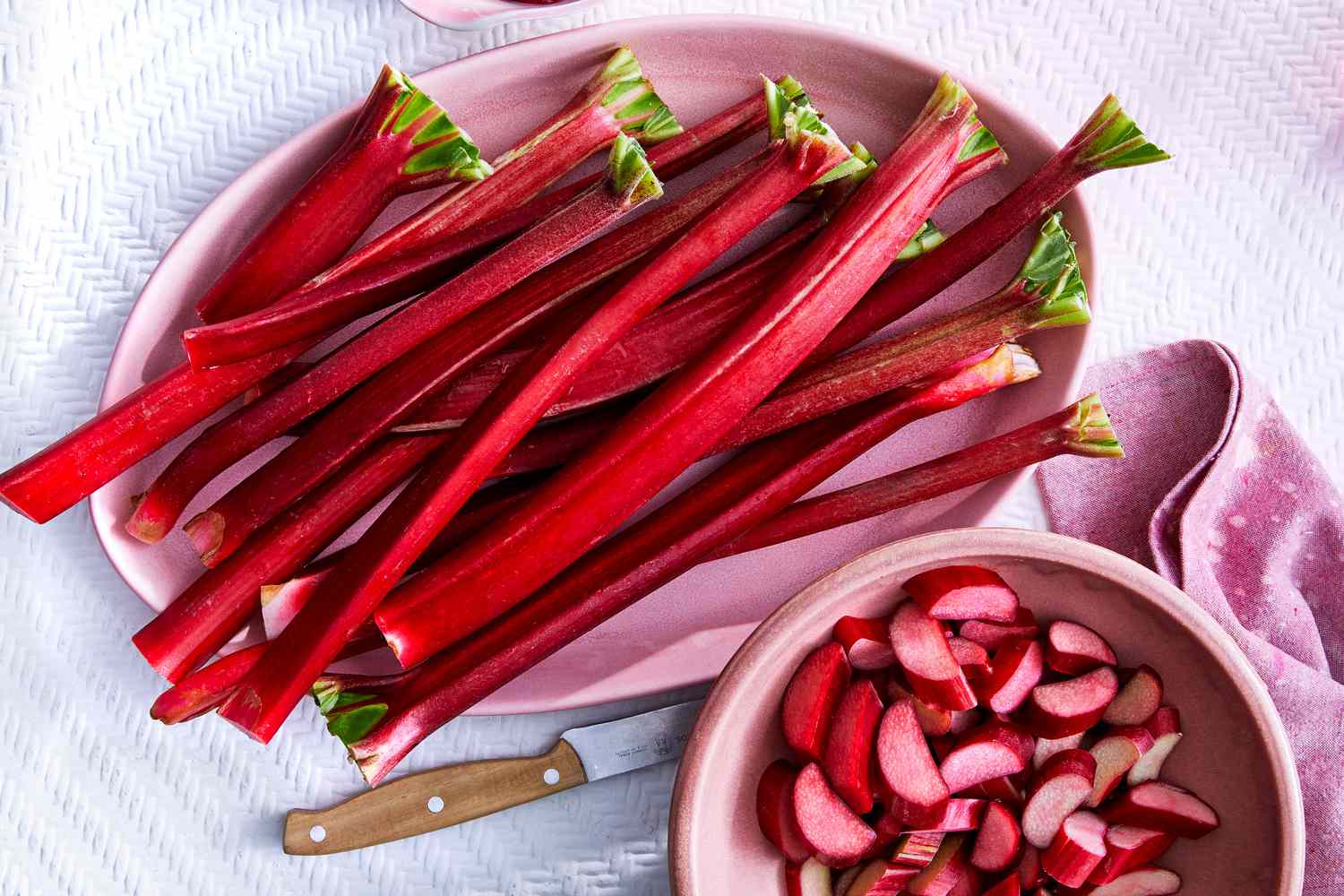
Rhubarb is a plant that often sparks curiosity. Is it a fruit or a vegetable? It's actually a vegetable, but in the kitchen, it's treated like a fruit. Known for its tart flavor, rhubarb is a favorite in pies, jams, and sauces. Its vibrant red stalks make it stand out in any garden or market. But did you know that the leaves are toxic? Yes, they contain oxalic acid, which can be harmful if ingested. Rhubarb has a rich history, dating back to ancient China where it was used for medicinal purposes. Today, it's celebrated for its unique taste and versatility. Ready to learn more? Let's dive into 25 fascinating facts about this intriguing plant!
Key Takeaways:
- Rhubarb is a perennial vegetable with edible stalks rich in vitamins and minerals, making it a healthy and versatile ingredient in both sweet and savory dishes.
- Despite being legally classified as a fruit in the US, rhubarb is botanically a vegetable with a fascinating history, including its use in traditional Chinese medicine and as a substitute for fruit during World War II in Britain.
What is Rhubarb?
Rhubarb, often mistaken for a fruit, is actually a vegetable. Its vibrant red stalks and tart flavor make it a unique addition to many dishes. Let's dive into some fascinating facts about this intriguing plant.
-
Rhubarb is a perennial plant, meaning it comes back year after year without needing to be replanted.
-
The stalks are the only edible part of the rhubarb plant. The leaves contain oxalic acid, which is toxic if ingested.
-
Rhubarb has been used for medicinal purposes for thousands of years, particularly in traditional Chinese medicine.
-
It is incredibly low in calories, making it a popular choice for those looking to maintain a healthy diet.
-
Rhubarb is rich in vitamins K and C, as well as calcium and potassium, contributing to its nutritional benefits.
Rhubarb in History
Rhubarb has a rich history that spans continents and centuries. Its journey from medicinal root to culinary delight is quite fascinating.
-
Rhubarb was first cultivated in China over 2,000 years ago, primarily for its medicinal properties.
-
It was introduced to Europe in the 14th century, where it became a valuable trade commodity.
-
By the 18th century, rhubarb had made its way to America, where it quickly became a popular ingredient in pies and desserts.
-
During World War II, rhubarb was promoted as a substitute for fruit in Britain due to rationing.
-
The name "rhubarb" comes from the Latin word "rhababarum," which means "root of the barbarians."
Growing Rhubarb
Growing rhubarb can be a rewarding experience for gardeners. It requires specific conditions to thrive, but the effort is well worth it.
-
Rhubarb prefers cooler climates and can tolerate frost, making it ideal for northern regions.
-
It needs well-drained soil and plenty of sunlight to grow successfully.
-
Rhubarb plants can live for up to 20 years if properly cared for.
-
The best time to harvest rhubarb is in the spring, when the stalks are tender and flavorful.
-
To encourage healthy growth, it's important to remove any flower stalks that appear.
Culinary Uses of Rhubarb
Rhubarb's tart flavor makes it a versatile ingredient in the kitchen. It can be used in both sweet and savory dishes.
-
Rhubarb is most commonly used in pies, often paired with strawberries to balance its tartness.
-
It can be made into jams and preserves, providing a tangy spread for toast and pastries.
-
Rhubarb can be stewed and served as a sauce over ice cream or yogurt.
-
It is also used in savory dishes, such as chutneys and sauces for meats.
-
Rhubarb wine and liqueurs are popular in some regions, offering a unique twist on traditional beverages.
Fun Facts About Rhubarb
Rhubarb has some quirky and interesting aspects that make it stand out in the plant world. Here are a few fun facts to tickle your curiosity.
-
In the United States, rhubarb is legally classified as a fruit, even though botanically it is a vegetable.
-
Rhubarb has a natural laxative effect, which is why it was historically used to treat digestive issues.
-
The color of rhubarb stalks can range from deep red to light green, but the color doesn't affect the taste.
-
In some cultures, rhubarb is known as the "pie plant" due to its popularity in desserts.
-
Rhubarb leaves were once used to polish pots and pans, thanks to their high oxalic acid content.
Rhubarb's Surprising Facts
Rhubarb isn't just a pie ingredient. This plant has a rich history and some unexpected uses. Originating in Asia, rhubarb was first used for medicinal purposes before making its way into kitchens. Its leaves are toxic, but the stalks are packed with nutrients like vitamin K and fiber. Rhubarb's tart flavor pairs well with sweet dishes, making it a favorite in desserts.
Interestingly, rhubarb was so valuable in the 18th century that it was worth more than spices like cinnamon. It even played a role in trade routes. Today, it's grown in many parts of the world and celebrated in festivals.
From its medicinal roots to its culinary versatility, rhubarb continues to surprise and delight. Next time you enjoy a slice of rhubarb pie, remember the fascinating journey this plant has taken to reach your plate.
Frequently Asked Questions
Was this page helpful?
Our commitment to delivering trustworthy and engaging content is at the heart of what we do. Each fact on our site is contributed by real users like you, bringing a wealth of diverse insights and information. To ensure the highest standards of accuracy and reliability, our dedicated editors meticulously review each submission. This process guarantees that the facts we share are not only fascinating but also credible. Trust in our commitment to quality and authenticity as you explore and learn with us.


